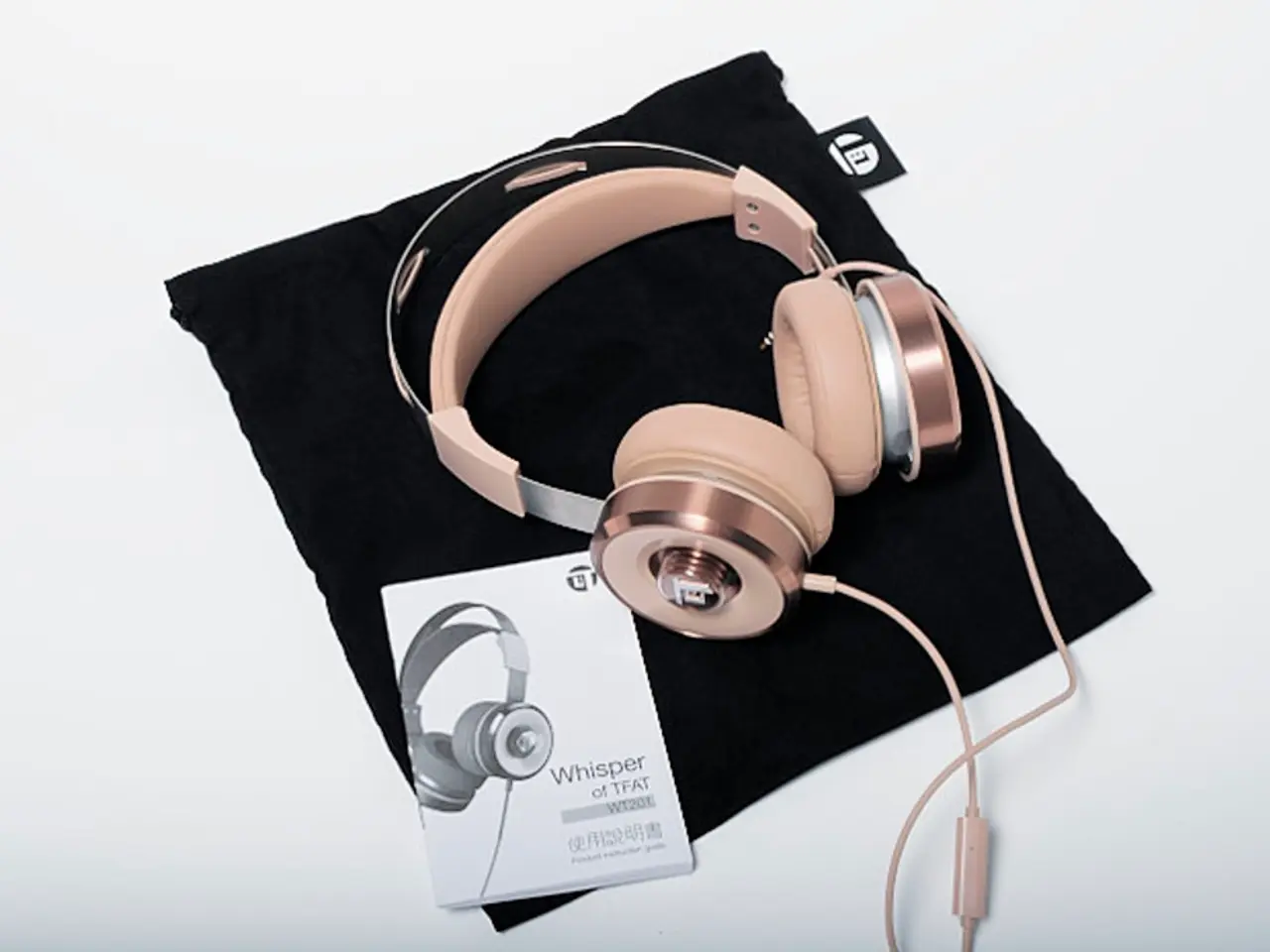Understanding Wireless Headphone Volume Adjustment: Crucial Information Provided
Wireless headphones have revolutionised the way we listen to music, podcasts, and more, offering freedom of movement and convenience. One of the key features of these devices is volume control, which allows users to adjust the loudness of their audio playback. In this article, we'll explore best practices for managing volume control on wireless headphones, ensuring an optimal listening experience while maintaining hearing safety.
Using Your Headphones' Native Volume Controls
To get the most out of your wireless headphones, it's essential to familiarise yourself with their native volume controls. Many modern models, such as Belkin SOUNDFORM and Sony WH-1000XM6, offer touch or physical controls for volume adjustment. For instance, Belkin earbuds respond to single taps on the right or left earbud for volume increase or decrease, while Sony headphones allow swiping up/down on a touch sensor for volume control.
Adjusting Volume Gradually
When using these controls, it's best to adjust the volume gradually to avoid sudden loud sounds that could potentially harm your hearing. Start with a moderate volume level and increase slowly to a comfortable listening level. If your device or headphones have volume limit or safety features, use these to prevent accidentally setting the volume too high.
Understanding Device-Specific Limitations
Some wireless headphones, like the Audeze Penrose, may require adjusting the physical volume wheel on the headphone itself due to limitations in wireless chip technology. Therefore, it's crucial to understand any device-specific limitations to ensure optimal performance.
Utilising Ambient Sound Features
Instead of lowering the volume for better situational awareness, consider using ambient sound or "quick attention" modes available on some models. For example, Sony's touch sensor can activate ambient sound while holding the touch panel, allowing you to stay aware of your surroundings without sacrificing audio quality.
Considering Compatibility and Additional Features
When choosing wireless headphones, it's essential to consider compatibility with devices, the type of volume adjustment method, and audio quality. Some wireless headphones come with advanced volume control options, such as voice assistant integration or companion apps for further customisation.
Maximising the Benefits of Volume Control
To maximise the benefits of volume control on wireless headphones, it's essential to monitor battery levels, ensure adequate pairing with your device, and familiarise yourself with the specific control mechanisms of your device. This will lead to an enhanced listening experience, increased safety, improved accessibility, and easier control during physical activities.
In summary, the best practice is to use your headphone's native volume controls carefully and in moderation, understand any device-specific limitations, and apply available safety or ambient sound features to optimise both listening enjoyment and hearing health. Happy listening!
[1] Belkin SOUNDFORM User Guide: https://www.belkin.com/us/support-article/FAQs/1001662 [2] Sony WH-1000XM6 User Guide: https://www.sony.com/electronics/support/headphones-earphones/wh1000xm6/manuals [3] Choosing the Best Wireless Headphones for Your Needs: https://www.techradar.com/best/wireless-headphones [4] Audeze Penrose User Guide: https://www.audeze.com/support/penrose [5] Smartphone Volume Limiter Settings: https://www.healthyhearing.com/help/smartphone-volume-limiter-settings/
- To get the best sound quality from various gadgets like Belkin SOUNDFORM and Sony WH-1000XM6, it's important to learn how to utilize their native volume control features, such as single taps and swiping gestures.
- To ensure a pleasant listening experience while preserving hearing safety, adjust the volume gradually and consider using the ambient sound or Quick Attention modes available on some models, such as Sony's touch sensor.




